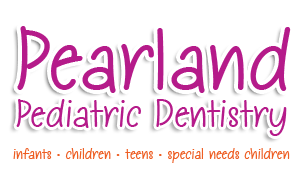The Thumb-Sucking Habit
April 24th, 2024

At Pearland Pediatric Dentistry, we are often asked “should I be concerned with my child’s thumb sucking?” So, our team thought we’d share what our thoughts are on your child sucking his or her thumb.
Infants Who Suck Their Thumbs
As infants begin experimenting with the basic functions of their mouths, from sucking on a bottle to beginning to speak, it is natural for them to suck their thumbs. Parents with young babies who regularly suck their thumbs probably don’t need to feel overly concerned, so long as fingers are kept clean and the habit is kept in check. For most children, the exploratory stage of thumb sucking ends after just a few short years. Problems with thumb sucking occur when infants grow into young children but the habit has not been resolved.
Dangers of Thumb Sucking
One of the main differences between an infant and a child sucking his thumb is the formation of the mouth and teeth. An infant’s mouth is barely beginning to grow and develop, so sucking a thumb might actually help to stimulate the process. For a child with a mouth full of teeth, however, a thumb-sucking habit might cause some serious problems. As a parent, it can be very important to watch your child carefully to make sure the sucking habit is regulated.
As a child grows and develops, baby teeth begin to fall out. A child sucking his or her thumb during the baby teeth stage may not run any great risks. Our team at Pearland Pediatric Dentistry often sees that once a child has developed his or her permanent teeth, the problems with thumb sucking can become more serious. KidsHealth.org states that children who suck their thumbs beyond the age of four or five might increase their risk of developing an overbite, infections, and other dental problems.
What You Can Do To Help
Parents who want to prevent possible problems for their child would be wise to begin preventive care early on. While you don’t need to be overly concerned about an infant sucking a thumb, it might be a good idea to help your toddler break the habit before permanent teeth begin to show.
- Try to use positive rewards for good behavior instead of negativity or threatening behavior.
- Talk openly with your child about the potential dangers of a thumb-sucking habit.
- Help your child find other productive things to do with the hands as a means of distraction. Playing a game of blocks, for example, might be a great diversion.
- Support and encourage your child while he or she is trying to break the habit.
As children develop, they have many things to learn and to think about. By understanding a few simple facts about thumb sucking, you can help your child develop in a healthy and positive way. If you have any other questions, feel to contact us at our Pearland, TX office, or ask Dr. Pamela Clark during your next appointment!







